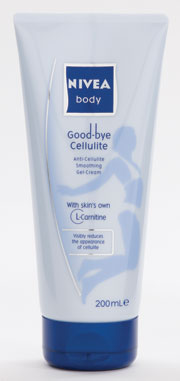Despite the hype, nutricosmetics are still some way off being the next big thing, says Carrie Lennard
A year ago, nutricosmetics and nutraceuticals were touted as the next big thing in the beauty industry, and many industry watchers forecast the segment to boom. However, the industry has arguably failed to capture the imagination of the global consumer in the way manufacturers had hoped.
A major sticking point is that sales have remained stubbornly concentrated in several key regions. Japanese consumers are happily buying into the concept of ingestible beauty, with 18% of all dietary supplements in 2009 having a beauty positioning. Beauty foods are also widely bought, with ingredients such as collagen routinely added to everything from teas to marshmallows. Neighbouring China also clocked up a US$5.5bn spend on beauty supplements in 2009.
Consumers in the UK and the US have cautiously dipped their toes into nutricosmetics, but consumers elsewhere in the world have been less receptive to the new breed of nutricosmetic products cropping up on the shelves of health and beauty retailers. In ultra beauty conscious Italy, for example, uptake has been slow, with beauty supplements accounting for just a 6% share of the country’s booming US$1bn dietary supplements industry in 2009.
In a sense, the industry was rather unfortunate with the timing of the major hype surrounding nutricosmetics as it coincided directly with the height of the recession when consumer sensitivity to price could not have been greater. There were numerous new product launches in beauty pills and beauty foods, usually with a far higher price tag than a standard product that made no beauty enhancing claims.
This proved to be the kiss of death for Danone’s ill-fated Essensis beauty yoghurt brand, which was on sale next to standard yoghurts; consumers simply didn’t buy into the product’s beauty claims enough to justify the extra cost so the product flopped. Other failures included beauty enhancing chocolate Dove Vitalize (dark chocolate enriched with B vitamins) and Dove Beautiful (which includes vitamins C and E, biotin and zinc), both withdrawn as a result of failure to win over consumer scepticism. The problem remains that even though many consumers would be willing to invest considerable amounts in their looks, the idea that eating a bar of chocolate will significantly improve one’s physical appearance is a bridge too far even for the most die-hard beauty junkies.
Of course there will always be consumers who are willing to take a punt and try a product. The problem is that as price increases, the bigger the leap of faith, and most nutricosmetic lines cost considerably more than vitamins and supplements that are not marketed under a beauty tagline. Innéov Fermeté hit UK shelves in January 2010 and came backed up with scientific evidence from a clinical trial; the product was proven to increase skin elasticity by around 9% compared with a placebo after six months of continuous use. Despite these credentials, the price is prohibitively high at £25 for a ten-day supply. While many women would willingly fork out for super-premium priced anti-ageing creams, the effects (albeit temporary) are usually relatively quick.

Regimes that combine a topical product with oral supplementation could hold the key to winning over consumers
Beauty pills, on the other hand, often state that their effect may not be seen for several months. In order to see the promised increase in elasticity, a consumer would need to spend £450 for a six-month supply. This kind of price tag brings nutricosmetics into direct competition not just with expensive anti-agers, but also with the plethora of facial surgical treatments available. This is the crux of why the success of the nutricosmetics industry is set to be limited – today’s consumer wants instant gratification, and visible, tangible results. While the long-term effects of botox, chemical peels and injectable dermal fillers may be unknown, there is little doubt that in the short-term they can visibly treat wrinkles, and more importantly do so with immediate effect.
Combination creams and supplements may provide a solution for manufacturers to this issue. Beiersdorf’s Nivea Goodbye Cellulite range comprises both a nutricosmetic pill and a cream. Since its inception, the range has helped to increase Nivea’s share in the global anti-cellulite market, indicating that this type of holistic approach may be more palatable to consumers who are sceptical about nutricosmetics and want more immediate results, brought about by the cream in addition to the longer term benefits the pills are intended to offer. To date, however, few such ranges have hit the market. Could manufacturers be missing a trick?
In order for nutricosmetics to ever stand a chance of moving beyond niche status, producers need to tap into the burgeoning middle classes in the beauty industry’s up and coming new markets, particularly the BRICs. According to Euromonitor International’s latest data, while Chinese consumers have bought into the concept, the market for beauty pills in the crucial Brazilian and Indian markets is currently negligible despite dietary supplement industries worth over US$350m and US$500m respectively in 2009. If the nutricosmetics industry is really going to move forward from a global perspective, it will have to focus its attention on building use among consumers in markets such as these. Otherwise, use will likely remain concentrated in Japan and China, the only markets in which consumers appear to have been completely won over by the industry.
